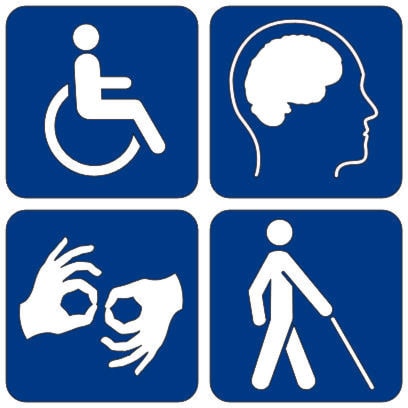While an inclusive, public play space seems like a boon for disability rights, it’s actually the bare minimum under the law.
As reported in July, a new playground in the heart of the territory’s capital that boasts wheelchair-accessible ramps, a roller slide, a bucket seat with a harness swing, and quiet zones is under construction.
A project funded largely by Canadian Tire’s Jumpstart Inclusive Play Project, the playground at Yellowknife’s Somba K’e Park is expected to open to the public in September.
A disabilities advocate who spoke with Yellowknifer on the topic seemed very lukewarm about the project — and rightfully so.
Discrimination based on ability has been illegal internationally since 1948 under the United Nations Universal Charter of Human Rights and Freedoms, and nationally since 1982 under the Canadian Charter of Rights and Freedoms. Yet, we’re still playing catch up — only making changes when there are complaints or threats of legal action. In fact, the voices informing these changes are, with little exception, not representative of those traditionally excluded or impeded from accessing spaces and services.
The idea to build the territory’s first accessible play structure didn’t even come from the government — it came from private citizens; a Yellowknife couple who own the city’s Canadian Tire.
Jason and Karen Butorac not only initiated the project, they donated $100,000 to make it a reality.
While we could herald this as community altruism at its best, the fact that Yellowknife and the NWT don’t already have accessible parks should actually be cause for concern — and quick action.
The conversation around creating inclusive user experiences is happening but 73 years have gone by since the United Nations passed the Universal Charter of Human Rights, which enshrined rights like equal access to services and education into international law.
The Northwest Territories Human Rights Act protects equality in five areas. One area requires unfettered access to public services, such as health care and education, and to facilities such as stores and restaurants.
Because accessibility looks different for each person, the Charter describes a second factor: protected grounds, or personal factors. Disability is one of them.
The NWT’s act describes disability as a mental or physical condition that creates substantial barriers to living one’s life.
With all the money we’ve seen come down the pipes this spring for GNWT and City of Yellowknife infrastructure projects, we hope universally accessible spaces and services will become the norm — otherwise, it could take years of legal action to eventually realize spaces and places that are actually in line with the laws of our territory, country and world. Unfortunately, the system is still reactionary, often only grinding into gear once a complaint is registered.
The GNWT is far from the only service provider playing accessibility catch-up — the content on the City of Yellowknife’s Public Library website, for example, is not fully accessible to those who use text-reading software to access textual information. The site features images of text that are not described for non-sighted readers and patrons.
We need to ask people who are differently-abled to come forth with solutions they know would work.
Even common language we still use to describe those who access information, services and life in a manner other than the established norm is discriminatory.
As a response to the medical model of disability, which views differently-abled persons as a problem to be fixed, the social model of disability was developed in the 1970s and ’80s.
Developed by people who were tired of being told they were the problem, the model reverses the onus on accessibility to information and infrastructure designers and service providers.
It says that people aren’t broken — our infrastructure and systems are broken and must be altered or designed to work for everyone.
It’s long past time to make universal access non-negotiable rather than a luxury.
